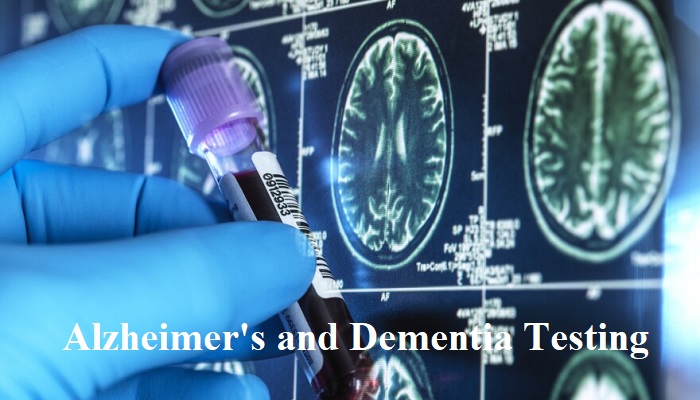The challenge of diagnosing Alzheimer’s disease and dementia effectively is critical, given their profound impact on millions worldwide. Advances in technology are revolutionizing the field, enhancing the accuracy and timeliness of diagnoses. These innovations promise to improve patient management strategies and outcomes through earlier detection and personalized diagnostic processes.
Patient and Family Perspectives on New Diagnostic Methods
In the evolving landscape of Alzheimer’s and dementia testing, patient and family perspectives play a crucial role. Individuals facing cognitive decline navigate a mix of hope and apprehension with the promise of earlier diagnosis. Concerns about stigma, loss of independence, and uncertainties regarding future cognitive abilities underscore the need for sensitive approaches. Additionally, ensuring the accessibility and affordability of new diagnostic technologies is imperative in addressing disparities in healthcare access and resources. Collaboration among stakeholders can align technological advancements with patient and family needs, promoting acceptance and utilization. Amidst the practical considerations and challenges faced by patients and families in accessing advanced diagnostic tools, some may find solace in the availability of diagnostic services offered by a home care agency, which can provide a convenient and supportive option for those who may face difficulty in accessing traditional healthcare.
Technological Innovations in Diagnosis
Artificial Intelligence (AI) and machine learning represent significant advancements in the diagnostic field, particularly in their ability to analyze and process large datasets quickly. For example, AI algorithms have been successfully applied to interpret brain imaging data, spotting early signs of Alzheimer’s that are typically difficult for humans to detect. Alongside AI, blood-based biomarkers are gaining traction. These biomarkers detect biological indicators of Alzheimer’s in the blood at stages far earlier than symptoms manifest. Similarly, eye-tracking technology offers a unique window into cognitive function by assessing the movement and focus of the eyes, which correlate with neurological health.
Regulatory and Approval Challenges for New Technologies
Navigating the regulatory landscape presents formidable challenges for developers of advanced diagnostic tools for Alzheimer’s and dementia. From demonstrating clinical validity to harmonizing regulatory pathways across jurisdictions, rigorous scrutiny is essential. Furthermore, reimbursement policies and healthcare financing mechanisms must be navigated to ensure sustainable market access. Collaborative efforts are key to addressing these challenges and fostering an environment conducive to innovation while maintaining rigorous standards for safety and efficacy.
Benefits of New Diagnostic Technologies
These new technologies have the primary benefit of being able to deliver faster, more accurate diagnoses. AI reduces the human workload by automating the analysis of complex data, such as MRI scans, with greater precision. Blood-based biomarkers provide a quick, inexpensive diagnostic tool that can be easily administered, even in community settings, thus expanding access to essential health assessments. Eye-tracking technology, being non-invasive offers a patient-friendly alternative that can lead to less stressful and more frequent testing.
Comparing Traditional and Modern Diagnostic Methods
Traditional cognitive assessments, while valuable, suffer from variability in results and often rely heavily on the subjective judgment of clinicians. In contrast, modern technologies like AI, blood biomarkers, and eye-tracking provide objective data that help reduce these variations. These methods streamline the diagnostic process, offer replicable and scalable assessments, and enhance the ability to diagnose Alzheimer’s at an earlier stage than previously possible.
Training Healthcare Professionals on New Technologies
Adopting new technologies requires updating the training protocols for healthcare professionals. Training must cover not only the operational aspects of these technologies but also their ethical implications, such as handling sensitive data and managing patient privacy. Institutions that have successfully integrated new diagnostic tools report improved outcomes, showcasing the importance of continuous education and adaptation.
Challenges and Limitations
While promising, new diagnostic technologies come with challenges. The integration of sophisticated technologies into existing healthcare systems requires substantial investment and coordination. There are also technical issues that need to be addressed, including the accuracy and reliability of the technologies across diverse populations. Ethical concerns, particularly related to privacy and the potential for data misuse, need careful management to maintain trust and compliance.
Global Access to Advanced Diagnostic Tools
Ensuring global access to advanced diagnostic tools for Alzheimer’s and dementia is essential for combating these diseases on a global scale. Disparities in healthcare infrastructure and resources present significant challenges, particularly in low- and middle-income countries. International collaborations can facilitate knowledge exchange, training programs, and infrastructure development to support integration into existing healthcare systems. Initiatives aimed at reducing costs, enhancing supply chain logistics, and promoting sustainable financing mechanisms are vital for expanding access to underserved populations. Ultimately, prioritizing health equity and inclusive collaboration can create a more sustainable healthcare ecosystem in the fight against Alzheimer’s and dementia.
Conclusion
The integration of advanced technologies into the diagnostic processes for Alzheimer’s and dementia marks a significant leap forward in healthcare. These tools not only enhance diagnostic accuracy but also open up new avenues for early intervention, which is crucial for managing and potentially altering the course of these diseases. As the healthcare sector continues to evolve, ongoing research, ethical management, and comprehensive training will be necessary for harnessing the full potential of these innovations. The future of Alzheimer’s and dementia diagnosis is bright, with technology paving the way for breakthroughs that could significantly improve the quality of life for affected individuals and their families.
Pat Baker has experience as a dementia caregiver, enjoys helping others, and writes for home care agencies in the Philadelphia area.


















